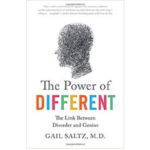At one of the first Learning and the Brain conferences I attended, a speaker briefly mentioned that learning styles theory doesn’t have much good evidence to support it.
That comment turned into a heated debate. Several attendees asked vexed, unhappy questions. The speaker held her ground.
When I got in the elevator at the end of that session, I heard one attendee curtly dismiss the speaker’s objection: “well, it’s all just statistics.”
It’s All Just Statistics
Well, it IS all statistics.
In the worlds of neuroscience and psychology, researchers rely on statistical methods to ensure their recommendations aren’t simply hunches.
Anyone can stand behind a microphone and have an opinion. But: if you’re going to do scientific research, your numbers have to add up.
And, as researchers look at valid statistical models, they just don’t find good support for the idea that — for instance — some people are visual learners and others are auditory learners.
The numbers just don’t add up. Or, in this case: if you teach “visual learners” “visually,” they don’t learn any more than if you had taught them “auditorily” or “kinesthetically.”
Multiple Entry Points
Instead, the content itself often offers guidance on the best way to teach. If you’re teaching a French or Spanish or Japanese accent, that content is — by its nature — auditory.
If you’re teaching geography, that content is visual.
Free throws? Kinesthetic.
Most content, however, can be taught in multiple ways.
For example: I’m thinking of an actress. She’s Australian. She played Virginia Woolf in that movie. And, she was married to Tom Cruise.
If you’re shouting NICOLE KIDMAN, you’re right. Notice that I gave you three entry points to the neural network that encodes this memory: her country of origin, a role she played, and her marriage.
So: “teaching to learning styles” helps because you probably teach your content in different ways — auditorily, visually, and kinesthetically. Those three different approaches give distinct connections to the memory you want your students to form.
This approach to teaching helps not because of a student’s learning style, but because all your students now have multiple ways to access that memory.
In other words, the theory helps students learn — but not for the reason it claims to.
“Learning Styles”: Today’s News
Daniel Willingham — one of the early debunkers of learning styles myths — has recently posted his current thoughts on learning styles. The short version:
Nope. Learning Styles still don’t exist. Really.
Learners should “tune their thinking to the task.” That is: learn about geography visually — even if you think you’re not a “visual learner.”
More than many researchers, Willingham gets teachers and teaching. So: if you’re still a learning-styles believer, I encourage you to check out his article.
In related news: Greg Ashman argues that, no, rejecting learning styles theory isn’t sexist. After all, LOTS of thoughtful female researchers reject the theory.
And: the Learning Scientists have a great take on this debate. We shouldn’t focus simply on rejecting learning styles theory. Instead, we should replace it with a better theory. They have thoughts on how to do so…
[Update, 6/25/18]Finally, Scientific American has a recent article showing that most students don’t use the learning styles that they believe would benefit them. And, when they do, those strategies don’t help them learn.





Not everyone agrees with Willingham either, but even so isn’t the surest way of reaching all students through the use of an integrated, multi-sensory teaching approach that incorporates current learning theory and strategic instruction? Statistics are important. So is an understanding of neuroscience and learning theory. Further, understanding child and adolescent development is essential.
The author is likely right–only when teachers have a reliable model to replace Learning Style theory will they abandon it. Why don’t we follow the science and give a psychoeducational assessment to every student? No one doubts the WISC or the WJ results that show HOW a students learns differently and then teach to those strengths and needs. Technology makes it possible for teachers to have almost all of that same information on every kid in a valid and reliable way–online assessments that have high correlation with the WISC and the WJ. Not sure why then we are still debating on methodology and focusing on adoption.
I find myself wondering what instrument was used by these debunkers to reach this point of view. There is substantial research that backs up the theory for styles of learning. I personally know of 38 different styles inventories that have been in use for decades. Maybe it is because the data collected is based upon feedback obtained from the individuals taking these different inventories? Could that be why this enormous amount of data has been dismissed. I do not discount statistics but I do discount statistics as the one and only valid data source. When it comes to learning, we are entering into the personal world of the learner and I believe that the feedback provided by them is invaluable.